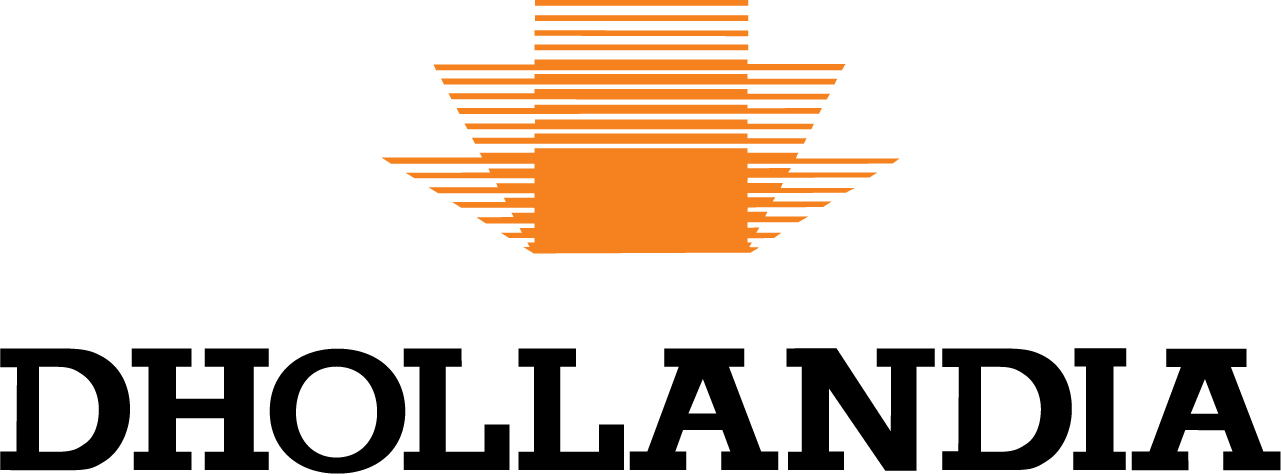
Truck Lift System Downtime on Just-In-Time Supply Chains
In the bustling automotive hubs of the Eastern Cape, where factories like those in Nelson Mandela Bay operate on razor-thin margins, a truck lift system failure can transform a routine delivery into a catastrophe. As of October 2025, South Africa’s logistics sector, valued at USD 14.7 billion and projected to grow amid AfCFTA expansions, grapples with escalating disruptions from port delays in Durban to power interruptions in mining regions. Just-in-time (JIT) supply chains, which synchronise deliveries to eliminate inventory buffers, amplify the stakes of such equipment breakdowns, turning minor hitches into multimillion-rand losses.
Recent reports from the Joburg Indaba on October 8 highlight how supply chain vulnerabilities, including trucking inefficiencies, threaten South Africa’s critical minerals exports. With the automotive industry facing a crisis, 12 factories at risk of closure as noted in mid-October analyses, these JIT models demand unwavering reliability.
Understanding Truck Lift System Downtime in South African JIT Contexts
A truck lift system, crucial for efficient loading and unloading on delivery vehicles, bridges the gap between trucks and docks in environments where speed is paramount. In JIT setups, prevalent in South Africa’s automotive and mining sectors, this equipment’s downtime, any operational halt, undermines the zero-inventory ethos, exposing chains to cascading failures without safety nets.
Triggers range from mechanical wear on potholed routes like the N2 to hydraulic leaks from contaminated fluids in dusty North West mines, electrical glitches amid load shedding, and skipped maintenance breaching NRTA Regulation 21. Durations span 15 to 30 minutes for on-site tweaks but stretch to hours for remote fixes, clashing with the 15-minute slots at Rosslyn plants. An August 2025 study on automotive suppliers reveals 58% of JIT operations suffer production pauses from these interruptions, while FMCG giants like Shoprite face workflow violations under the Occupational Health and Safety Act.
Operational Disruptions: Delays That Halt the Line
In South Africa’s JIT landscape, truck lift system downtime strikes hardest at delivery precision, where every second counts in synchronised flows. Automotive plants, employing over 150,000 as per Minister Parks Tau’s August remarks, rely on sequenced parts arriving flawlessly, yet equipment failures routinely derail this. With global automotive logistics disruptions potentially costing USD 13 billion annually, a figure resonating locally amid 2025’s sector crisis, these halts expose the fragility of lean models amid infrastructure woes like Bayhead Road upgrades.
Border delays alone, costing R2.7 billion as of September, compound the issue, turning local truck lift system glitches into national chokepoints. Operators must contend with the Competition Commission’s fair trading mandates, where tardiness invites penalties and erodes partnerships.
- Unloading Bottlenecks at Docks: A malfunctioned truck lift system forces manual alternatives, impractical for heavy pallets, idling teams and breaching tight 15- to 30-minute windows at automotive facilities.
- Assembly Line Stoppages: JIT sequencing crumbles as parts delays pause robots and workers, potentially halting shifts in Eastern Cape plants and inflating overtime under the Basic Conditions of Employment Act.
- Contractual Repercussions: Suppliers incur fines for missed slots, aligning with stringent pacts that safeguard zero-buffer efficiency in retail and mining hauls.
- Workforce Idle Time: Labour stands by, amplifying compliance risks with health and safety protocols during prolonged waits.
Beyond these immediate shocks, the psychological toll on drivers, stranded on remote Limpopo routes, fuels driver shortages, a top 2025 pressure per TydeCo’s October outlook. Recovery efforts, like rerouting amid Durban port backlogs, further strain resources, underscoring the need for digitisation trends highlighted in mid-October logistics forecasts.
Cascading Effects Across the Network
Truck lift system failures propagate like shockwaves in interconnected JIT webs, upstream idling suppliers while downstream partners scramble. In mining, where platinum output dips 1.3% in 2025 due to operational snags, a single breakdown delays ore hauls, bottlenecking AfCFTA exports.
Downstream, distribution hubs clog, with reroutes hiking fuel by 10 to 20% on tariffed N1 stretches. PwC’s March 2025 economic outlook warns of amplified risks from energy disruptions, where 85% of automotive timelines extend via such logistics failures. The Department of Transport’s multimodal push offers hope, yet trucking remains pivotal.
The Financial Sting: Quantifying the Losses
As October 2025 unfolds with UNCTAD’s call for resilient transitions on October 22, the monetary drain from truck lift system downtime demands scrutiny. South Africa’s freight inefficiencies, once pegged at R1 billion daily, now eclipse that amid 3.1% repair hikes and ESG-driven costs. For JIT operators, these incidents eclipse mere fixes, embedding opportunity losses that threaten 8% revenue erosion in disrupted chains.
FleetWatch’s September analysis emphasises lifetime cost-per-kilometre metrics, where downtime inflates operational expenses in a market eyeing USD 19.9 billion by 2030. Border and port snarls, per recent SCT updates, layer on exponential tolls.
- Productivity Erosion Per Hour: Detention fees hit R750 to R1,500 per truck, scaling to daily losses of R6,700 to R11,400 in idled assets.
- Rush Repair Expenditures: Expedited parts and mechanics add R7,500 to R30,000, straining budgets amid 6.2% inflation.
- Penalty Clauses in Contracts: Late JIT deliveries trigger R7,500 to R75,000 fines, common in automotive and retail agreements.
- Broader Economic Forfeits: Plant halts forfeit up to R34 million hourly, mirroring global USD 13 billion disruption potentials localised to SA’s crisis-hit sector.
These tallies, echoed in Road Freight SME Summit insights from February, reveal downtime’s stealthy assault on margins. Proactive budgeting, as advised in June fleet guides, can reclaim funds, but ignoring ripples invites deeper fiscal wounds in a volatile 2025.
Harnessing Predictive Maintenance for Reliability
Predictive tools, leveraging IoT for truck lift system vigilance, counter these threats head-on. Sensors flag pressure dips or vibrations pre-failure, curbing unplanned halts by 30 to 50% and extending asset life 40%, per McKinsey benchmarks adapted to SA’s context.
The 17% CAGR in this USD 5.5 billion market suits fleets battling load shedding, ensuring NRTA adherence through remote diagnostics. In automotive, where parts shortages persist per September dealership reports, this foresight preserves JIT cadence.
Real-World Lessons: Case Studies from South Africa
October’s automotive turmoil, 12 factories teetering, as LinkedIn analyses note, mirrors JIT perils. A mid-month Durban flood recovery saw truck lift system breakdowns exacerbate inbound delays at Toyota South Africa, idling 45,000 vehicles and costing millions in sequenced halts, per ongoing studies.
In mining, October 16 reports detail power-induced platinum delays in the North West, where a 48-hour truck lift system outage during ore transport forfeited R12 million in exports. FMCG disruptions, affecting 30% of Johannesburg deliveries amid port congestion, as per Journal of Transport and Supply Chain Management, illustrate retail vulnerabilities.
Strategies to Mitigate and Build Resilience
With 2025’s trends pivoting to digitisation and regulatory shifts, as outlined in October logistics outlooks, mitigating truck lift system risks requires holistic fortification. Redundancy and training form the bedrock, yet integration with AfCFTA demands scalable, tech-infused approaches to weather geopolitical strains.
The Critical Minerals Strategy of May 2025 urges supply chain logistics advancements, positioning maintenance as a competitive edge in beneficiation pushes.
- Redundant System Designs: Dual truck lift systems provide failover, slashing single-point vulnerabilities in high-stakes mining hauls.
- On-Site Spare Inventories: Kits with seals and solenoids enable 50% faster fixes, compliant with NRTA roadworthiness tests.
- Mobile Response Networks: GPS fleets dispatch technicians swiftly, aligning with Department of Transport efficiency goals.
- Training Regimes: Operator drills on early detection avert 20% of faults, bolstering Occupational Health and Safety Act adherence.
- Telematics Alerts: Real-time notifications reroute loads, prioritising JIT integrity during incidents.
Implementing these, as Dhollandia SA’s October guide on cantilever tail lifts advocates for heavy-duty cycles, yields measurable uptime gains. Long-term, they foster audit-proof operations, turning regulatory hurdles into resilience pillars amid evolving ESG scrutiny.
Top Rated Tail Lift Services in South Africa
In a market where reliability defines success, Dhollandia SA stands out as the premier provider of truck lift system services, earning acclaim for its unwavering commitment to quality and customer-centric solutions. Established in 2018 as the authorised dealer for Europe’s leading tail lift manufacturer, Dhollandia SA, formerly DH Lifts, has rapidly expanded its footprint with branches in Port Elizabeth, Cape Town, Durban, and Johannesburg. This strategic presence ensures nationwide coverage, delivering swift support that minimises disruptions in South Africa’s demanding JIT environments. Backed by the global Dhollandia group’s 50-year legacy, founded in 1968 with production sites across five countries and distributors in over 70 nations, our local team brings international innovation to local challenges, from potholed highways to load-shedding impacts.
Our product portfolio further cements our top-rated status, offering versatile truck lift system options to suit every operational need:
- Cantilever Lifts: Low-maintenance, cost-effective entry-level solutions ideal for light-duty commercial vehicles and rental fleets, handling up to extreme capacities for heavy machinery transport.
- Slider Lifts: Robust for cargo up to 2,000 kg, perfect for forklift-heavy operations or dock access, providing quick cargo space entry.
- Fold-Away Lifts: Stored under the chassis for unobstructed access, suited to FMCG and food transport with capacities from 750 kg to 3,000 kg.
- Column Lifts: High-efficiency designs for commercial vehicles, featuring corrosion-resistant builds for all-around durability.
- Passenger and Van Lifts (Special Order): Customised for multi-passenger vehicles, minibuses, and panel vans, ensuring safe, flexible mounting.
Complementing our core offerings, we stock Pommier accessories, renowned since 1945 for seven product universes including couplings, protections, fixings, openings, and lighting, tailored for bodybuilders and truck manufacturers. Additionally, our Prime Transport Solutions pneumatic trailer supports provide safer, faster alternatives to traditional landing legs, with 25-tonne static loads and automated deployment in just five seconds. These integrations enhance overall vehicle performance, aligning with the Department of Transport’s efficiency mandates.
Dhollandia SA’s dedication to safety, flexibility, and superior finishes has positioned us as the go-to for budget-friendly, eco-conscious truck lift systems that install quickly and perform reliably. By prioritising unrivalled customer service, we deliver peace of mind, ensuring your JIT supply chain remains uninterrupted.
Securing South Africa’s JIT Future
Truck lift system downtime imperils the heartbeat of South Africa’s JIT ecosystems, from Eastern Cape assembly lines to platinum belts, where October’s disruptions underscore urgency. As global strains deepen, UNCTAD’s October plea for sustainable transport rings true, local operators must prioritise equipment integrity to harness USD 19.9 billion growth projections.
Yet resilience beckons through innovation, with predictive and telematics tools slashing risks by half while honouring NRTA mandates. In AfCFTA’s dawn and infrastructure revamps, fortified chains promise not just survival, but leadership in turbulent times.
Ready to fortify your fleet? Contact us at Dhollandia SA for bespoke truck lift system solutions that ensure seamless JIT performance. Our team stands ready to partner on your resilience journey.
